Although Steam’s gaping Gettysburg gap narrowed considerably on Saturday, until my favourite Battle of Gettysburg title joins the rather dear Scourge of War: Gettysburg in this line-up, Steam’s selection of wargames dedicated to the pivotal Pennsylvanian scrap, will remain glaringly incomplete. As I argued many years ago, Sid Meier, Jeffery Briggs, and Bruce Reynolds achieved truly great things back in 1997.
(previously published in PC Gamer UK)
When Marcellus Jones propped his carbine on a rail fence on the morning of July 1, 1863, and squeezed off a shot at an approaching Confederate column, he had no idea what he was starting. Over the next three days a million more shots rang out, America’s destiny hung in the balance, and the seeds of one of the finest military tactics games ever, were sown.
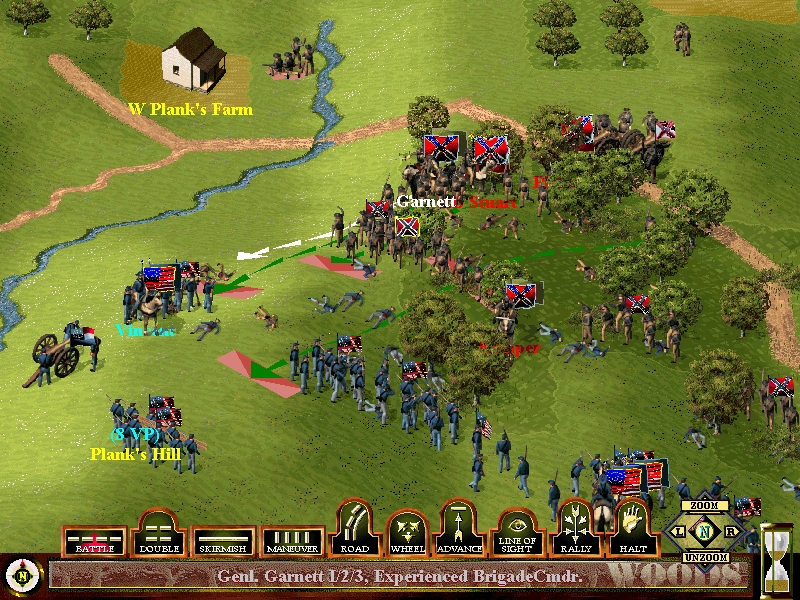
Before any developer is allowed to make their first PC wargame they should be locked in a room for at least a week with this near-perfect turnless American Civil War general-em-up. Sid’s first project away from Microprose, is as strong in its own modest way as Civ, Pirates and Colonization. Age has not withered it. Besides the jerky magic-lantern animations of the soldier sprites (quickly forgotten in the heat of battle) and the fact the battlefield view can only be rotated in 45 degree increments, there’s little here to suggest that this is a 13-year-old relic.
The AI for example, feels positively cutting-edge. Dogged in defence, and determined and devious in attack, it’s a joy to play against. Or more accurately, they are a joy to play against. SMG provides a cadre of artificial adversaries each with their own distinct personalities. You can either pick manually at the start of a scenario, or, for a more unnerving challenge, jab the magic ‘k’ key at any time, to randomize a general’s psyche. Not knowing whether you’re facing a direct, death-or-glory type, a cagey flanker, or some dangerous combination of the two, makes those early pre-contact manoeuvres all the more fraught.
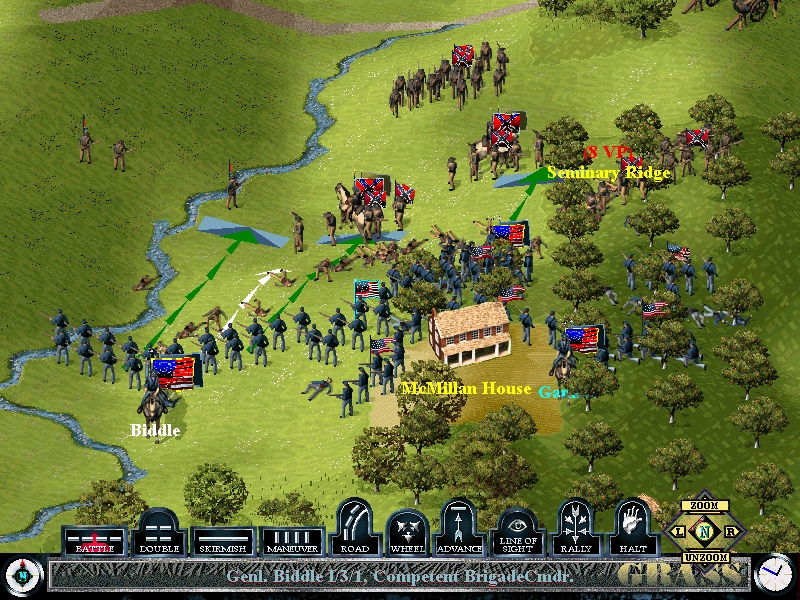
Even if you do have your opposite number taped, you can’t afford to count chickens or rest on laurels. If I had a pound for every time an enemy brigade had punched a hole in one of my over-extended lines, or popped up unexpectedly on one of my forested flanks, I’d have enough money to persuade Mr Meier to make that English Civil War wargame I’ve always dreamt about. The ersatz enemies play like they want to win, and – crucially – play like they understand how to win. Find weak or demoralised units then hammer them until they flee; outflank and outnumber stronger units; attack from the rear where possible; enfilade with artillery… all the tactics you’re employing, they’re employing too.
If countering this cunning meant learning a tangle of obscure rules or mastering a mess of a GUI I wouldn’t be writing this battle hymn. A hefty hunk of SMG’s genius resides in its elegance – its democracy. To play you don’t need to know any stats or combat formulas. You don’t need to click through layers of menus or shepherd every last unit. Just arrange your troops sensibly (easy with the brigade movement option) utilise terrain, heed morale and experience levels, and take the odd calculated risk – a timely charge perhaps, or a knackering forced march – and you’ll end up feeling like Lee or Meade even if you don’t always get their results.
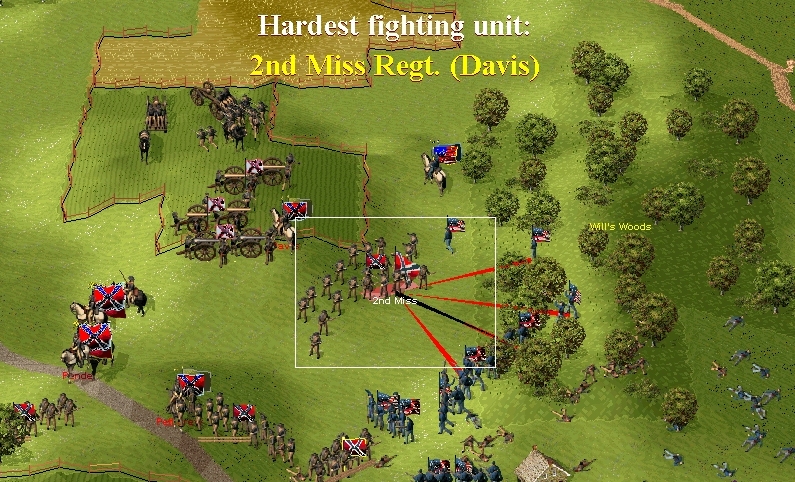
I’m not quite sure how Meier, Reynolds, and Briggs manage it (strictly speaking this is the work of three strategy design legends) but the engagements often feel like they’re teetering on a knife edge. If I could just drive that Yankee battery out of that orchard; if my brave Virginians down by the stream could just hold on for another minute… if, if, if. And if all your hopes end up dashed there’s a surprising amount of satisfaction to be gained from just knowing you put up a good fight. The thorough post-combat debriefs include Most Effective Unit and Hardest Fighting Unit awards – gratifying wooden spoons for the valiant vanquished.
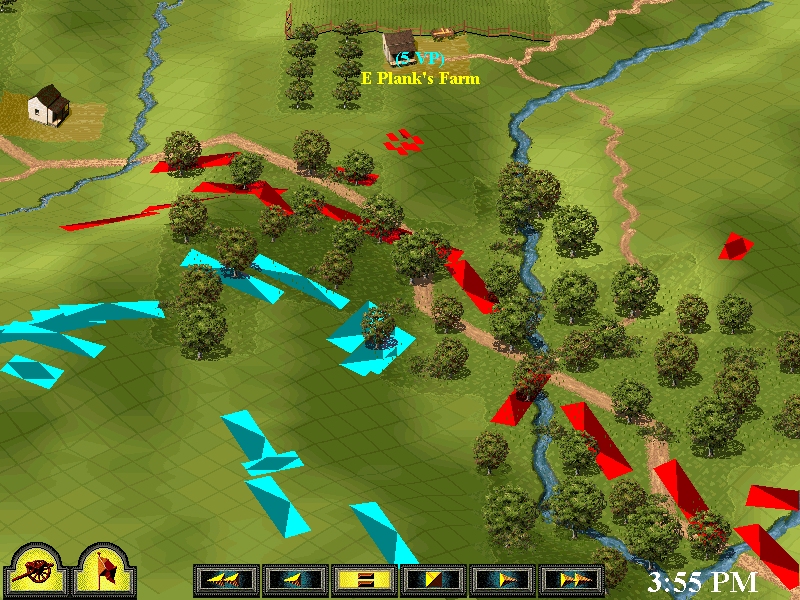
With the excellent replay facility, you can revisit the deadly ballet you’ve just co-choreographed, savouring every thrust, counter-thrust and fighting retreat. It’s watching these recordings – observing the lines of multicoloured rectangles jostle and manoeuvre – that you realise how plausible it all is. Paused at any point, the distribution of forces wouldn’t look out of place adorning the page of an Osprey Campaign book.
Unlike its fine sequel Antietam, SMG doesn’t give you the chance to fight the titular battle as one seamless scrap. Given the workload inevitable with such a scenario, it would be wrong to consider this a failing. The approach taken of splitting the battle up into manageable chunks works well. The campaign slots these smaller episodes into an intelligent sequence, using your last result to determine your next encounter. Random reinforcement schedules and deployment positions helps keep things uncertain. For total unpredictability there’s a random skirmish generator nestled amongst the 25 single scenarios. Choose this and you can find yourself fighting for any of the dozens of evocatively named landmarks on the game’s single sprawling map. A couple of clicks and suddenly Sheep Heaven Hill or Spangler’s Knob become the centre of a swirling shooting match.
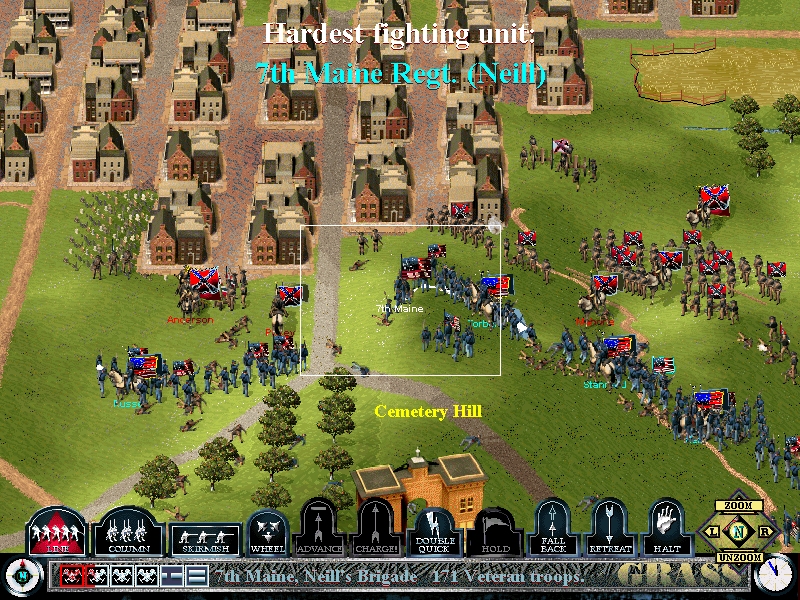
Whether the victory location is a rock-strewn hilltop, a forested ridge, or a clapperboard farmstead SMG manages to make it feel worth fighting for. The briefings that preface campaign and single scenarios play an important role in this. Over an animated map paperweighted with a revolver and cartridges, commanders discuss the coming battle, their thick accents and simply stated concerns, far more powerful than the dry sit-reps or overblown exhortations that pass for preamble in most military strategy titles. Once again Sid shows the way.
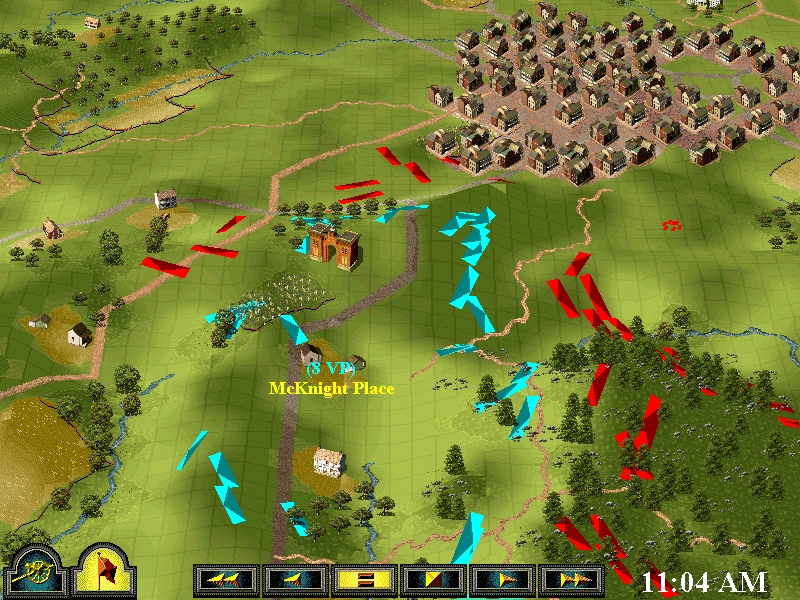
Wherever you look in SMG there’s the assured touch of a master. If this article happens to find its way onto the desk of that master, I’d like to thank him and his team for the years of profound strategic satisfaction SMG has provided, and politely nag them to either get started on a remake (Civ5 can wait!) or ensure the original – horribly scarce now – finds its way back onto shelves soon.

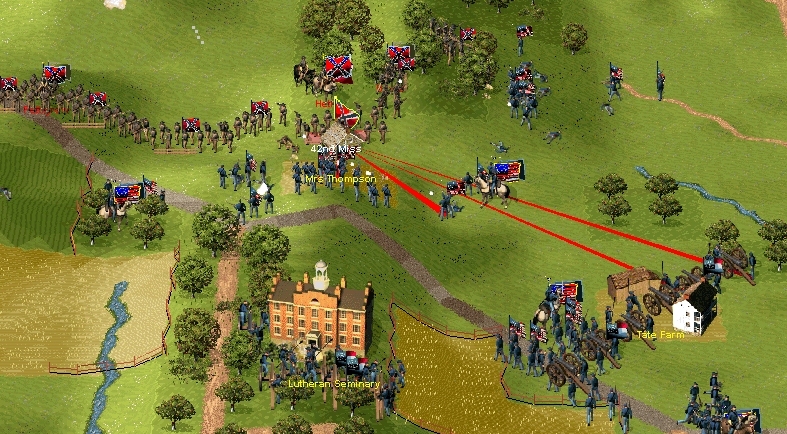
Loved this game back in the day. The fmv into and outros were hilarious. And then it had the secret jeb Stuart day zero skirmish prologue that ran into the main campaign as a seventh battle but only if you launched it as a stand alone battle and was the only mission to actually include cavalry iirc.
I was just a bit too young to play this when it came out, and have been hoping for years for a stable re-release. Given that we finally saw Age of Rifles get that treatment, perhaps there is yet hope…
I guess I’m denser than normal… I could not figure out what Sid Meier game you’re talking about. If it was on that Steam list, I couldn’t find it (but I didn’t click on every single one). Help a poor follower out, father?
Sid Meier’s Gettysburg!
(The ! is part of the name)
Tim was making the point that it’s not in that list, which as a result renders the list sadly deficient.
Also, despite replying, I am of course not your father. To my knowledge.
Thanks for the explanation! And the link to Sid’s game, unless I also missed that, too.
I gotta start reading these earlier in the day.